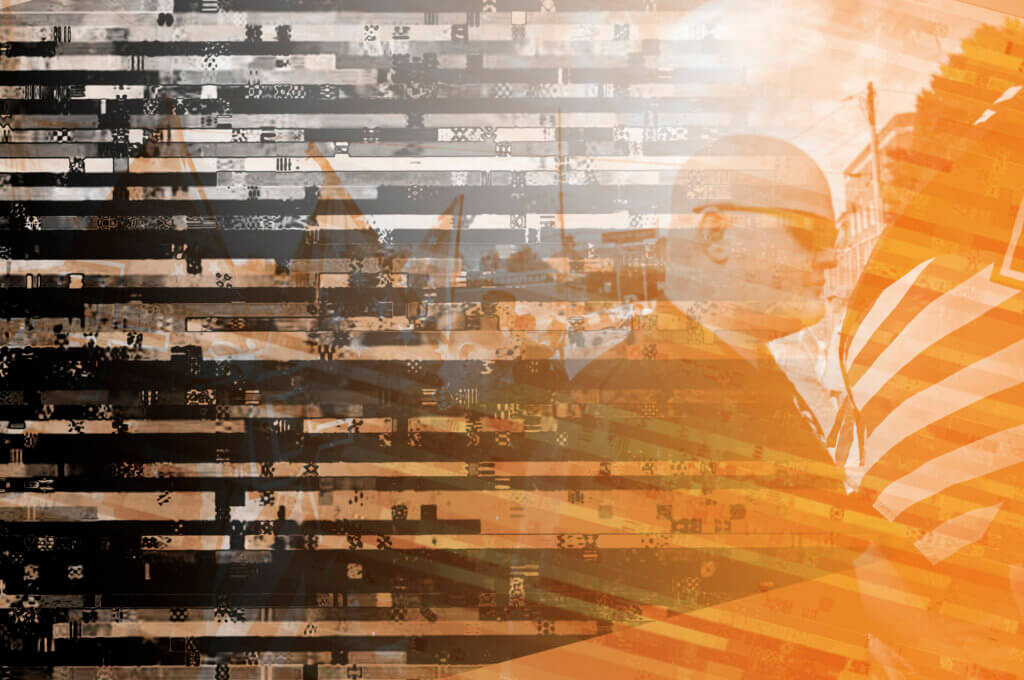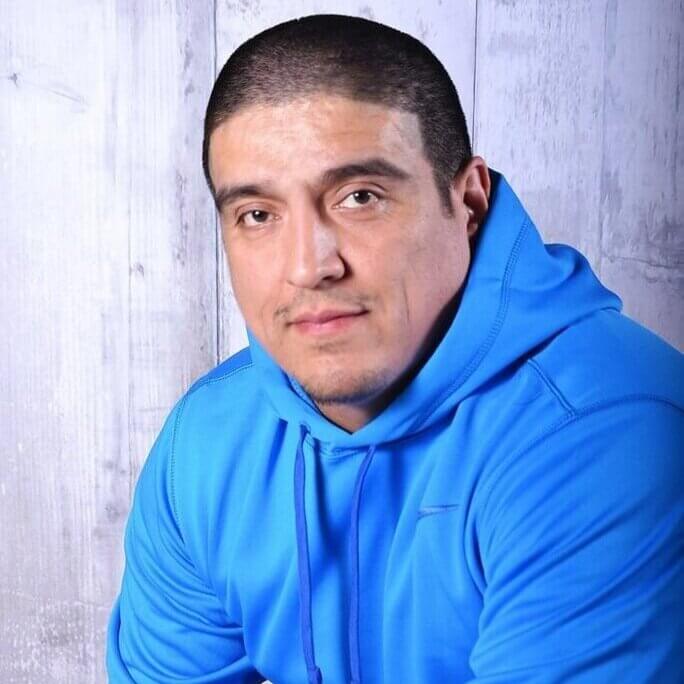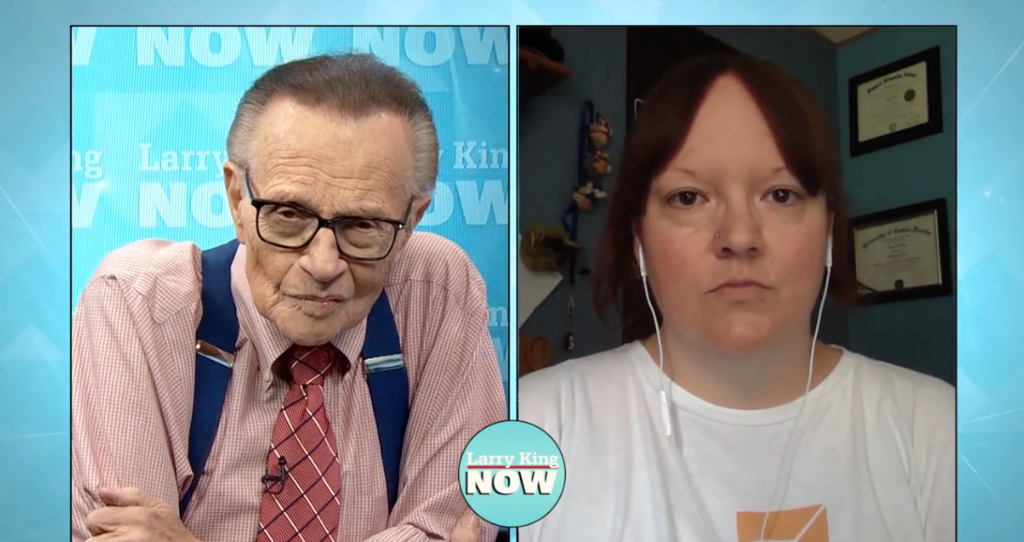
The first time Thomas Engelmann spoke to a reporter about his involvement with the Aryan Brotherhood — and his near-fatal attempt to get out — he was a nervous wreck.
He trusted the reporter, but he didn’t know how the story would come out. When it finally did in April 2018, the lengthy, 2,000-word article went national within the USA Today network of newspapers. And Engelmann said he felt something he hadn’t come close to feeling until then.
“Validated, finally,” he said. “I had been shot, and I had been erased, my whole identity had been erased by that point. I was a dead man.
“I was finally able to come out and say, ‘This is my story. This is how it happened.’ And once I was able to do that, I felt at peace.”

Firsthand accounts from formers (people who have left violent extremist groups) offer a unique and credible look at violent extremism. They humanize the issues, help galvanize public support, and point to solutions.
But as media outlets here and abroad become increasingly more interested in the topic, new risks are emerging:
• Formers who go public are vulnerable to emotional and physical attacks.
• Any missteps on their part can undermine the industry of violence prevention.
• Journalists who rely on the wrong sources, fail to vet facts, or publish overly-simplified stories mislead the public and hurt the credibility of other formers, researchers, and practitioners in the field.
“The importance of these narratives are multifaceted,” said Pete Simi, a researcher who has been studying violent far-right extremism for two decades. “One of them seems to be that it helps us better understand how people can disengage from these groups.
“So, if our understanding of the disengagement process is informed to some extent by inaccuracies, then we are going to develop interventions that get it wrong.”
THE RISK TO FORMERS
Contemporary voices in the world of violent extremism have a powerful tool their predecessors did not: Social media.
In the days before Twitter and Facebook, formers often needed an organization’s help to share their story. For Angela King, a former neo-Nazi skinhead who helped found Life After Hate, that organization was the Holocaust Documentation and Education Center.

“A lot of us older formers, we didn’t intend to come out and do what we do. For some of us, it was an organic process that happened as we were working on ourselves.” During her early speaking engagements, King said she was introduced as a “former skinhead.”
“There wasn’t much else to my resume,” she said.
That changed as she continued her academic, professional, and personal work.
But the question she and others face remains: “When does a person stop being a former? Do they ever stop being a former? Does labeling someone a former ever stunt their growth in any way?”
Brad Galloway, King’s colleague and fellow former-turned-researcher, said formers must balance a desire to contribute to the national conversation on extremism with their own well-being.
“There are downsides to going public,” Galloway said. “Formers go through the process of guilt and shame, and imagine someone getting completely lambasted on Twitter.”
Engelmann agrees. “[Reporters are] trying to give color to a story. They try and dig for the painful, the nasty, whatever is there. If you’re not ready for it emotionally, it can really catch you by surprise.”
“There are downsides to going public. Formers go through the process of guilt and shame, and imagine someone getting completely lambasted on Twitter.”
THE RISK TO THE INDUSTRY
Collectively, formers make up a class of experts that are receiving more and more attention. As our focus turns from Islamist extremism to incidents of domestic terrorism at the hands of the extreme far-right, the public’s appetite for the former’s perspective is growing.
But the newness of these discussions makes it difficult to determine who exactly is an authority. And perhaps more to the point, What is the extent of their expertise? Has the former become an expert in the field, taken steps to make amends, practiced self-healing, and undergone academic training? Or is that person simply an expert on their own life experiences?
“How do we know about the credibility of a former,” Galloway said. “I wish I had a dataset to manage that, but we don’t. Because that would be weird if we did.”
Formers who are not prepared to talk beyond their personal experiences may unwittingly mislead the public about the process of disengagement and de-radicalization. And the problem becomes magnified when reporters rush to fill the void of credible voices.
“Autobiographies are notoriously inaccurate,” Simi said. “So, it’s not surprising that formers, especially in the early stages as they’re reconstructing and trying to figure out and make sense of their lives, would do so in a way that is not so accurate.
“But to have journalists then simply parrot that is a little bit troubling.”
When formers get things wrong, reporters are likely to get things wrong. Galloway points to the fundamental difference between disengagement and de-radicalization — a distinction that can have an outsized impact on researchers, law enforcement, and interventionists.
“There are lots of people out there who are disengaged from a hate group and are still ideologically-motivated in some form or another,” he said, adding: “You can be helped by somebody else, but somebody doesn’t do that for you. You need to do the work. And that’s where maybe it’s too soon for a person who disengages [to become] a public figure talking about de-radicalization in the media.”
HOW REPORTERS CAN HELP
Though there is no clear rubric by which to judge a former’s experiences and credibility, King says it’s critical that reporters verify what they’re told.
“If someone comes out and says they’re an expert, you should check that out,” she said.
Journalists should be aware that some formers may be more eager than others to seek out interviews. While that’s not necessarily a deal-breaker, reporters should look for credentials and evidence of a former’s contribution to the field.
“I think we’re not looking at what a person has done to really change,” King said. “Because it takes so much more than saying I’m different, I’m not racist anymore.”
Simi, who has conducted more than 100 interviews with formers, says overly-simplistic stories tend to create binaries that don’t exactly translate to reality.
Too often, journalists rely on a narrative based on the hero’s journey in conquering adversity. Inside that neat, beginning-middle-end storytelling, however, is an absence of the real work formers must put in.
“We lose the messiness. We lose the nuance,” Simi said. “It’s in the messiness, it’s in the nuances where we can really gain a sense of exactly more or less what are the things that matter in terms of being able to leave one of these groups and change.”

